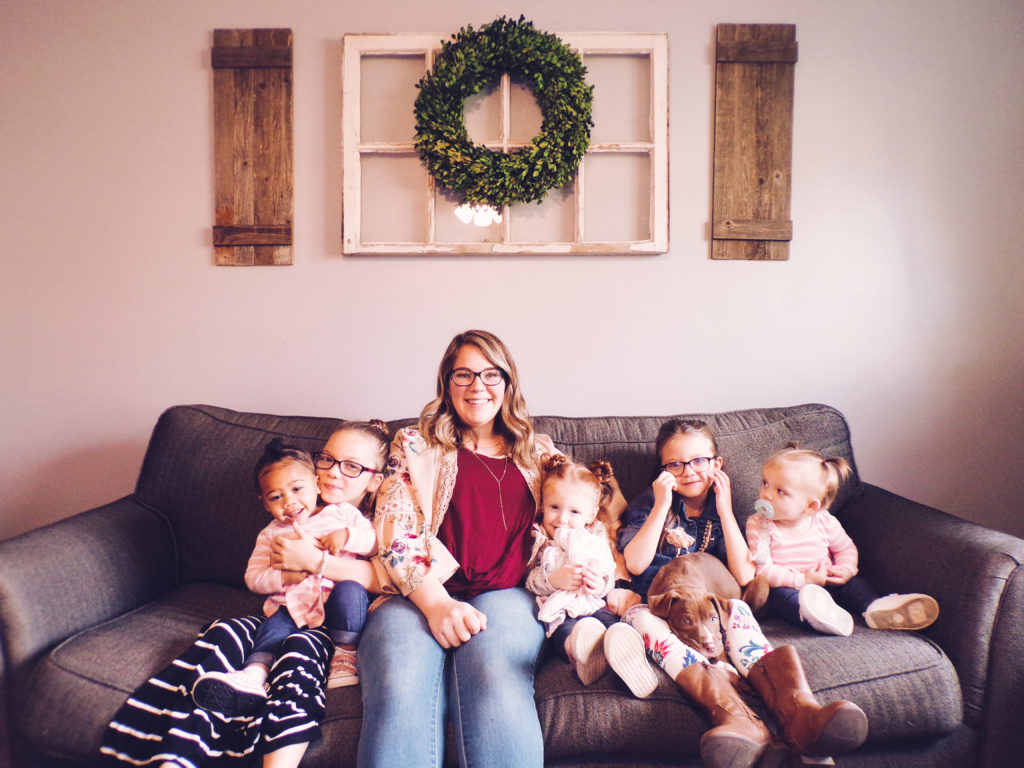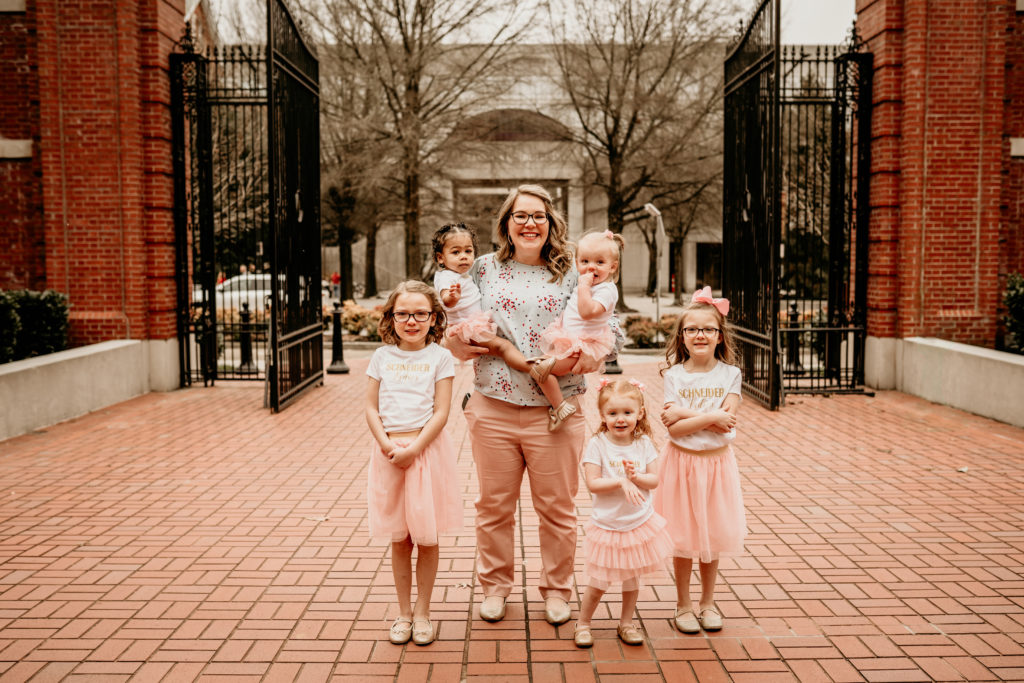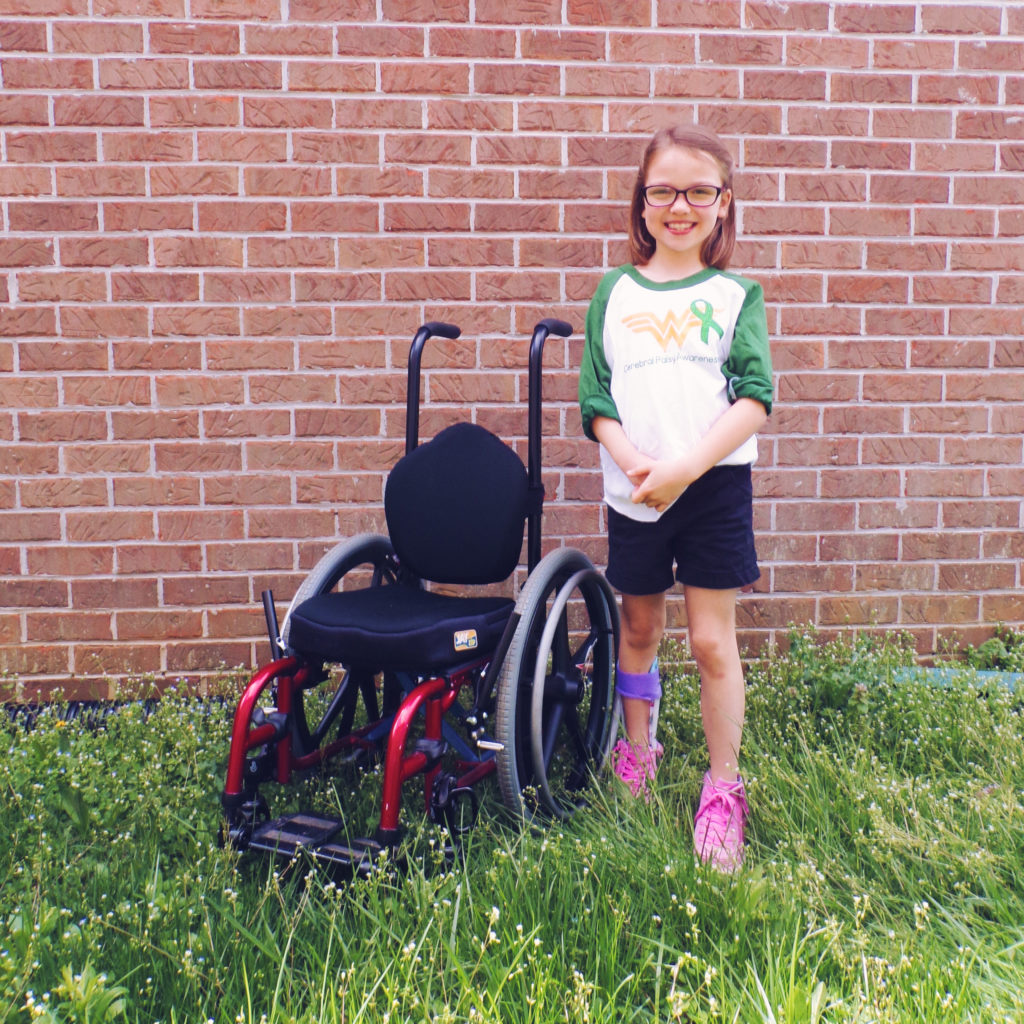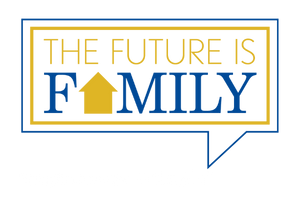Sitting on the floor in the middle of the night with the dark closing in around her as she wiped her tear-streaked cheeks wasn’t exactly what Beth Schneider expected when she became a foster parent. Nonetheless, there she was, trying to get her daughter back to sleep.
Mia was a premature four-pound baby born with NAS, Neonatal Abstinence Syndrome, meaning she had drugs in her system. For three weeks. Mia cried almost constantly while she went through withdrawal, resulting in many late nights with Beth trying desperately to get her to sleep while keeping four other children calm.
That’s right, Beth Schneider was raising five daughters — alone.

There are a lot of parents who chronicle their experiences with foster care on the internet. While I’m not a foster parent, I curate embrella’s social media platforms and I see photos from tons of committed parents. I’ve become accustomed to the hearts placed on children’s faces in photos to maintain their anonymity, sunny scenes from walks, children clinging to jungle gyms and little ones bouncing around the house. But scrolling through Instagram’s “discover” feature, I didn’t expect to see Beth — a single mother with not one, not three, but five adoptive daughters.
Beth takes a family photo on the living room couch each week, perfectly recording the rapid changes of childhood. Biological siblings Ava and Sadie are often mistaken for twins with their long, lean limbs and glasses perched on their heart-shaped faces. Nora is the middle child, with a blaze of red hair that is pleasantly disheveled as if her mischievous nature took physical form. Mia and Lucy are about five months apart, and the photos show their transformation from newborns into toddlers, sometimes in matching onesies, with Mia’s hair dark and curly and defying gravity, and Lucy’s falling in straight bangs above her eyes.
I needed to find out more about this family.
I messaged Beth through Instagram; she was kind and forthcoming and willing to talk. So one sunny Monday afternoon a couple weeks later, I gave her a call.

Beth grew up in Michigan in a religious community that modeled the importance of selfless service. When Beth was fifteen, her aunt and uncle decided to adopt a young girl from Quito, Ecuador. The child was born with arthrogryposis, a condition that causes issues with motor functioning — the same rare genetic condition that her aunt and uncle’s two biological children had. Beth cared for her cousins often, and she remembers thinking that she would likely never be able to parent a child with impaired motor function. The inconvenience of navigating a world that isn’t made for disabled bodies seemed far too difficult.
Beth traveled with her aunt and uncle to South America for the month-long adoption process to care for her cousins. There, they stayed in orphanage on a large missionary campus. One day, the quiet of afternoon naptime swept the campus, and Beth found herself nestled on a sofa in the guest house with soft afternoon sun spilling through the windows.
“I was holding a little girl named Sophia,” Beth said over the phone, her tone quick and slightly breathless as she battled a cold. “She was a six-week-old preemie born with NAS… I just remember looking at her face and crying, wondering how someone could have left her. God very specifically spoke to my heart that day and said, ‘This is what you’re doing with your life.’”
A year after she graduated college, Beth sat at her church in Knoxville, Tennessee, where she was a classroom teacher at a Christian school. That day, her friend, the director of a pro-life women’s clinic, talked about what it meant to be pro-life. “He was saying that pro-life means being pro-life not just pro-birth and getting people to have babies, but being there for women and children and men in every state of life.” He specifically discussed the importance of foster care and the role drugs may play in the need for foster care.
Beth realized that her time to foster had arrived.
The next day she started calling Christian foster organization, but because she was only 24 years old, Beth didn’t meet the age requirement. The Tennessee Department of Child Services (DCS) had no qualms with her age and signed her up for classes starting the next week.
“Twelve days after I felt God called me to do foster care, I was doing it,” Beth said.
Her first child, a newborn, was only with her for 44 hours before being placed in a home with other siblings. At the time, Beth said she couldn’t accept the newborn’s two siblings into her home, so she left it up to those who could.
“And now here I am with five girls,” she said, laughing.
Less than a week after the newborn went to live with siblings, Beth received a call from the state asking if she could take in two sisters, one of which was living with cerebral palsy. “I told them I had to think about it. Then I called my friend who is a nurse asking what cerebral palsy even is.”
CP is a permanent movement disorder that often appears in early childhood. Ava hadn’t received any medical treatment after her diagnosis, and her caseworker didn’t have any information about the severity of her condition. “The caseworker said, ‘yeah but she looks fine,’” Beth remembers.
Only ten years earlier, Beth was certain she couldn’t parent a child with a movement disorder.
“I really didn’t realize what taking in a child with CP meant,” Beth said. Part of what it meant, she would find out, was wheelchairs and braces and muscle atrophy, just like it did for her cousins.
Four-year old Ava and two-year old Sadie arrived at Beth’s tiny apartment in May, with the heavy heat of Tennessee summer rolling in. Ava’s leg was in a cast, but not because she’d broken any bones. Since her right leg is longer than her left, a result of her disease, and she hadn’t received proper medical treatment, Ava had been walking on the toes of her left foot for four years. This meant she didn’t develop an Achilles tendon. When she was placed in care, doctors began using a series of casts to extend the muscles in her heel to allow her to walk properly.
Ava is constantly learning how to cope with the effects of living with a condition that creates pain and weakness in her muscles. On a trip to a museum with her active, able-bodied cousins, she struggled to keep up, and she had begged not to bring her wheelchair. “She wanted to feel like a normal kid,” Beth said. At the end of the trip, as soon as she was out of her cousins’ view, Ava broke down in tears in front of Beth.
“She was in a lot of pain.”
Beth is very careful about what she shares publicly about her daughters, but she does think it’s important to normalize medical conditions among young people, especially those in foster care. Considering that children with disabilities are 1.7 times more likely to experience maltreatment than those without, normalization is especially important among those in the foster care system.
Ignorance is bliss and in Beth’s case, it was ultimately a blessing.
If I had known how hard it was going to be, I don’t think I would have done it. Just because it’s hard doesn’t mean that it’s wrong. Sometimes we are called to do hard things.”Beth Schneider
“If I had known how hard it was going to be, I don’t think I would have done it,” she said, an audible lump forming in her throat. “Just because it’s hard doesn’t mean that it’s wrong. Sometimes we are called to do hard things.”
While Beth and Ava were struggling to understand Ava’s CP, Sadie was dealing with her own complicated emotional issues. “Sadie basically screamed the first few months, just because she didn’t know another way to handle her emotions,” Beth said. She screamed when she had to put on shoes. She screamed when she had to eat dinner. But bedtime was the worst.
To get Sadie to fall asleep, Beth had to lay in bed with her, singing softly in her ear and holding her tightly to let her know she was safe. “If I left or moved too soon, she would start crying all over again,” Beth said. It took eight weeks for Beth to make small shifts toward shortening this routine — eight weeks for Sadie to start to feel comfortable.
At the time, Beth was working full-time while trying to keep up with the girls’ medical and emotional needs. Both of the girls went to therapy sessions; Ava was in and out of physical therapy, Sadie required intense nightly sessions with Beth to fall asleep, and on top of it the girls kept getting sick with strep throat, ear infections and the flu. Beth was having a hard time holding things together. When Beth expressed her needs on Facebook, a member of her church volunteered to help with some of Ava’s appointments.
The girls’ caseworker wasn’t as understanding.
In an email, the caseworker expressed concerns that Beth wasn’t the right fit for the girls, and that maybe they would be better off in a two-parent home. “I was feeling really inadequate,” Beth said, and hearing that the caseworker didn’t see her as fit for the girls pushed her to the edge. “I loved them so much that I was willing to let them go if it was truly what was best for them,” Beth said.
She and the caseworker set up a meeting.
Two weeks later, Beth sat at the DCS office across from the caseworker, her supervisor, and the girl’s biological mother in a meeting to determine their future. The girls had already packed their bags in their bedroom at Beth’s apartment, ready for another goodbye. Beth’s foster parent caseworker was also in the meeting, and at one point she took control of the conversation. “She said I was trying my best, I had a plan in place to change Ava’s appointment times,” Beth said. Even the girls’ biological mom chimed in, saying the girls were doing well in this home. Then the biggest shift came. The supervisor asked Beth if she was certified as pre-adoptive, and suggested that reunification may not be possible.
Beth’s tension melted into excitement. She had entered the DCS office feeling like an unfit mother and expecting to let the girls go.
But soon, Beth and the girls were able to unpack their bags for good.

Going into all of this, Beth wanted to help biological families remain together. Her mission for fostering was to develop relationships and help parents grow and eventually reunify with their children. Sitting in her 700 square-foot apartment, she dreamed of how she could share what she was rich in: love. She dreamed of her and biological parents sitting in church together, being inspired by the same sermons. Beth thought she might adopt when she was older, married and more financially secure, but for now she wanted to help keep families together.
“I thought it would be this beautiful redemption story,” she said.
But three-and-a-half years after her fostering journey began, she’d already adopted five children.
Around the time that Beth found herself sleep-deprived due to Mia’s withdrawal symptoms, she had four kids at home. She had brought then 16-month-old Nora into her home as an emergency placement on a holiday weekend about a year before. Before coming to Beth’s house, Nora was a month-old baby with wisps of red hair, quietly waiting in a bassinet at the dull DCS office as social workers frantically searched for a family. Beth was ready to close her home, but she answered the call.
“They dropped her off within two hours,” she said. “I was like, okay, I have a baby now.”
It was another three months before she got the call for premature Mia and the Schneider household swelled to five.
Then, on Sadie’s second day of kindergarten, with the Tennessee heat yet to give way to fall, Beth and her four daughters ran into Nora’s great-grandfather.
“He told me Nora’s mom was pregnant again.”
Beth knew that Nora’s mom was still using drugs, as she’d been in jail recently and she feared the developing baby would also be put up for adoption.
“At that point, all I could say was ‘Don’t call me, I have enough on my plate,’” Beth said.
She was taking care of 16-month-old Nora, three-month-old Mia (who was going through serious withdrawal) as well as four-year-old Sadie and six-year-old Ava. Like Sophia, the newborn Beth cradled all those years ago in Ecuador, all five girls were born with NAS, Neonatal Abstinence Syndrome, which occurs when the mother uses drugs while a baby is in utero. Symptoms of NAS can vary, from dehydration to long-term learning problems. For Mia, it meant extreme sensory problems that required tight swaddling and hard patting on the back to quell. Nora had incredible difficulty with eating, having to use a premature baby nipple on her bottle until she was nine months old.
Two weeks after learning of Nora’s biological mother’s pregnancy, Beth was sitting in her car, Knoxville heat seeping in, before shuffling the girls to another appointment, when her phone rang.
It was the state.
Nora’s mom was specifically asking if Beth would adopt her baby when she gave birth.
“I got off the phone and just sobbed,” she remembers. “I just knew it was going to be so hard.” But, months later when Lucy was born, Beth took her in.
It’s just not about me. It’s about these kids.”Beth Schneider
“It’s just not about me,” said Beth. “It’s about these kids.”
Because all her daughters were born with NAS, the adoptions qualified the girls for state medical assistance- healthcare provided by Tennessee government. This is the only way that Beth’s adoptions were feasible. “Wheelchairs are incredibly expensive without insurance,” she noted.
And that’s not even accounting for the unrelenting factor of time. Despite having five children under eight-years-old, all who entered her life within two-and-a-half years, Beth still only has 24 hours in a day. She said that on a normal week, they can have upwards of ten appointments between the five girls.

On a normal Tuesday morning, Beth sighs in relief at the click of three secured car seats. Then she hoists Ava’s wheelchair into the trunk before driving five chattering girls to drop off Ava and Sadie at school. Once she waves goodbye, Beth jumps in the car to double back to her house where she grabs the stroller for Mia and Lucy, since the wheelchair and the stroller don’t fit in the car at once.
Finally, she can head off with the other three girls to doctor’s appointments. Lucy has frequent gastrointestinal appointments, and Mia is watched for respiratory issues that hospitalized her in December. Depending on the day, when Beth picks up Ava and Sadie, it might be off to therapy for Nora, physical therapy for Ava and hopefully snacks somewhere in between.
*
While things didn’t necessarily play out like she’d imagined — there were no church services attended with her daughter’ biological families, and none of her youth were able to achieve reunification — relationships with her daughter’s birth families remain important to Beth. On the phone, she told me that she had scheduled a playdate with Nora and Lucy’s brothers next week. Beth is especially close with Nora and Lucy’s 18-year-old sister, Kirsten, who babysits the girls and has spent Thanksgiving with them. Whenever they can, Beth wants the girls to spend time with their biological families.
Beth said that nurturing these familial bonds has been hard at times, but for her, it’s a no-brainer. “I couldn’t look them in the eyes when they grow up and tell them, ‘I could have reached out to your family, but I didn’t because I didn’t feel comfortable, It’s not about me,” she says.
The coronavirus pandemic has shifted the global reality, and the same is true for the Schneiders. Beth has been left to the challenge of keeping the five girls occupied during quarantine. Beth is doing her best, hosting five-person fashion shows and dance parties, taking photos of the girls dressed up like princesses, but most importantly, she’s endlessly showing how she is there for them for the long haul.
Beth and her sister, who also fosters, plan to get matching tattoos that say, “We can do hard things.” Beth stands by this phrase daily, even when dishes pile up, when there are five appointments in one day, when the girls don’t understand their homework, when its bath time again, when diapers seem never ending, and when there are five girls at her feet begging for snacks.
Ultimately, it’s just another day of being there and being consistent for kids who deserve nothing less.




Dear Beth,
My hat goes off,to you. I too had adopted two siblings at the age of 62. Yes the mother was unstable, . I had the first one since she was 3 months and her sister since birth. Now my daughters are 6 and 3 years old.,
It is a challenge but our hearts go out to the children and their needs and how we can supply them with the love and security that we had as children ourselves.
Keep up the good work and never look for the blessings look for the LOVE.💝
Thank you for your kind thoughts!
At 60 I feel I may have missed the “window” of opportunity. Inspired by these beautiful stories!
Your appreciation is appreciated, Larry!